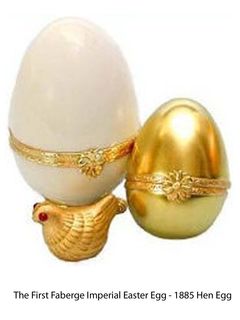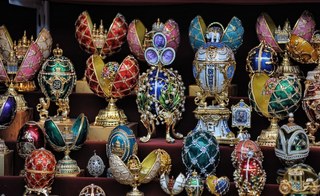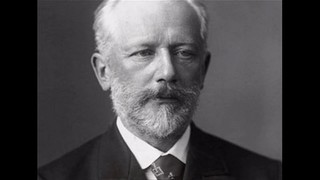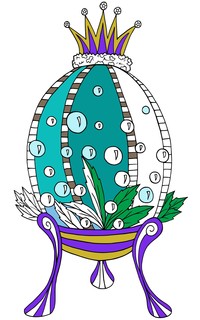What are Faberge Eggs and What are they Made From?
The Allure of Fabergé Eggs: A Glimpse into Opulence and Craftsmanship
Let's embark on a journey back in time to 1885 when Tsar Alexander III sought a unique Easter gift for his wife, Empress Maria Fedorovna. The occasion? The celebration of their 20th betrothal anniversary.
However, history whispers that the inspiration for this extraordinary gift was a Fabergé egg owned by Maria's aunt, Princess Wilhelmine Marie of Denmark. This treasure had captivated Maria's imagination during her childhood.
The egg crafted for Empress Maria was no ordinary creation; it was an opulent masterpiece made from gold. The exterior, adorned with opaque white enamel, unfolded to reveal its first surprise, an exquisite matte yellow-gold yolk.
This, in turn, opened to unveil a multi-coloured gold hen, itself concealing a minute diamond replica of the Imperial Crown.
A small ruby pendant dangled delicately from this imperial creation. Sadly, the last two surprises within the egg have vanished into the annals of history, their whereabouts shrouded in mystery.

Empress Maria, delighted by this extraordinary gift, elevated Peter Fabergé to the coveted position of 'goldsmith by special appointment to the Imperial Crown.' Then began a legacy that would captivate the world.
Enchanted by the allure of Fabergé's creations, the Tsar continued to commission eggs, each design more intricate than the last. According to Fabergé family tradition, even the Tsar himself was unaware of the forms these eggs would take—the only stipulation being that each must conceal a unique surprise.
The fame of these Imperial eggs transcended royal circles, with Fabergé crafting additional large eggs for a select few private clients, including luminaries like the Duchess of Marlborough, the Nobels, and the Rothschilds. Among these, a notable series of seven eggs was created for the industrialist Alexander Kelch.
While countless eggs claim to be Fabergé, only those crafted by the House of Fabergé bear the true mark of authenticity.
Authentic Fabergé eggs were exclusively produced between 1885 and 1917; any purportedly newer creations are mere imposters to the name. Most Fabergé eggs were miniature, popular as Easter gifts, often worn on chains around the neck, similar to the concept of charm bracelets.
The most renowned eggs produced by the House were the larger ones commissioned for Alexander III and Nicholas II of Russia. Of the 50 eggs crafted, an astonishing 42 have endured the test of time, becoming cherished relics of a bygone era.

What Are Faberge Eggs Made of?
Faberge eggs are made of precious metals like gold or silver and decorated with hard stones. Often they had combinations of enamel and gem stones. The term "Fabergé egg" has become a synonym of luxury and the eggs are regarded as masterpieces of the jeweller's art. The Faberge Imperial Easter Eggs are regarded as the last great series of commissions for objets d'art.
The materials used in Fabergé eggs vary, but they typically include:
Precious Metals: Fabergé eggs are often made of precious metals such as gold or silver. The metal is meticulously crafted into an egg shape and serves as the base for the intricate designs.
Gemstones: The eggs are adorned with an array of gemstones, including diamonds, emeralds, rubies, and sapphires. These gemstones often create intricate patterns, floral motifs, and other decorative elements.
Enamel: Vibrant and colourful enamel is a distinctive feature of Fabergé eggs. The enamel is applied in layers and fired to create a smooth, glossy finish. It is used to enhance the visual appeal of the eggs, creating a stunning play of colours.
Miniature Paintings: Some Fabergé eggs feature tiny paintings on enamel. These paintings often depict really intricate scenes, portraits, or symbols, adding an extra layer of artistry to the eggs.
Mechanical Elements: Many Fabergé eggs are not just static decorative objects; they often include mechanical elements. For example, some eggs open to reveal a hidden surprise or contain miniature figurines that can move.
Pearls: In some instances, pearls are used as additional embellishments, adding a touch of elegance to the overall design.
Each Fabergé egg is a unique work of art, and the specific materials used can vary from one egg to another. The House of Fabergé was known for its attention to detail and commitment to using the finest materials, making these eggs some of history's most exquisite and valuable pieces of decorative art.
Peter Carl Faberge (pictured below) died in 1920

In 2004, the world bore witness to the sale of a collection of nine Fabergé eggs and approximately 180 other objects at Sotheby's, presented by Forbes' heirs. However, before the auction commenced, the entire collection was acquired by Victor Vekselberg for a staggering sum estimated between $90 and $120 million, ensuring the preservation of these treasures for generations to come.
As artists we marvel at the legacy of Fabergé eggs, we are reminded that beyond their material opulence lies a testament to artistry, history, and the enduring allure of one of the most remarkable creations in the world of luxury and craftsmanship.
Check out my Eggcellent Eggs Colouring Book on Amazon (where the main photo above is from), featuring some beautiful faberge style eggs to colour.
If youre interested in art and want to know mre, please feel free to get in touch.
Posted: Thursday 1 April 2010
